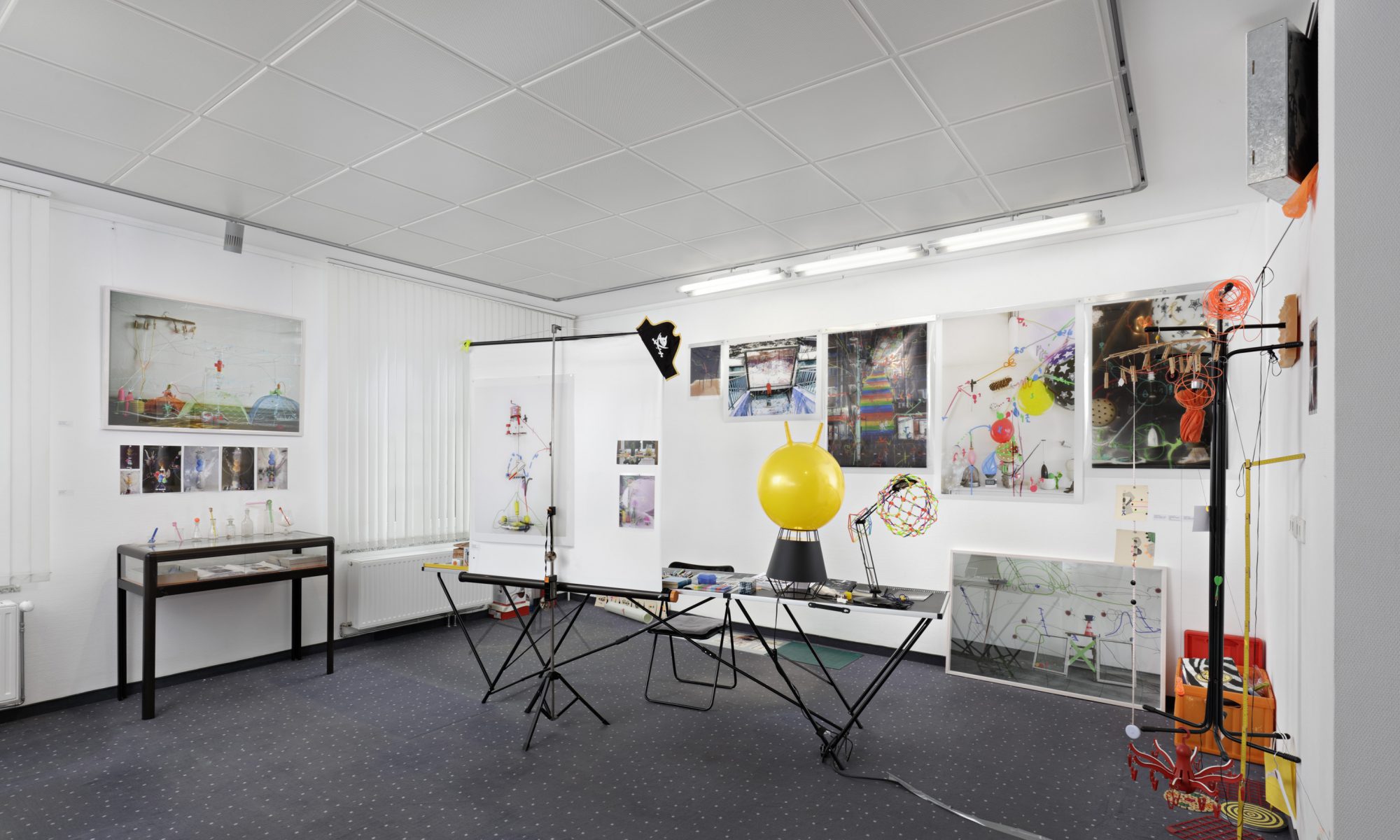








Trockenleitung_MARstall, 2022
Located at
Landesmuseum Mainz
Große Bleiche 49-51
55116 Mainz
cite-specific Installation
3,80 x 5,50 x 3,70 m
Installation with
16 laundry racks, household objects, toys and tools,
transport box, light elements & digital pigment prints on scaffolding
Pigment prints
kreuzung_6, 2018
150 x 100 cm | ed 3 + 2 AP
kreuzung_2, 2018
150 x 100 cm | ed 3 + 2 AP
ableitung_12, 2020
200 x 137 cm | ed 3 + 2 AP
Sponsored by
Ministerium für Familie, Frauen, Kultur und Integration in Rheinland-Pfalz, NEUSTART KULTUR, Leifheit AG
The installation Trockenleitung_MARstall takes up a historical context by presenting a bright red toy horse hanging limply from the top bar of the scaffolding instead of the golden horse at the entrance portal of the Landesmuseum, which was once the electoral riding hall, which serves as a supporting structure and at the same time as a carnivalesque stage for the two- and three-dimensional work components. The MAR in the title of the work ironically refers to the fact that things are not quite right here, in the sense of the word meaning of impaired.
In reference to the stone depot in the inner courtyard of the museum, the front part of the work contains a store of utensils with which the artist usually works. Colored sports ribbons, play figures such as Indians and cowboys, as well as a basketball hoop, a wooden box and a mosquito net can be seen. The arrangement is continued by a pigment print in which cowboys and Indians are engaged in a chase on a trampoline. This form of war game also refers to the military function of the original riding hall and thus also to the warlike appropriation of foreign territories, which has led to cultural appropriation in the Rhineland since Roman times. The riding hall was even used for concerts by Paganini.
The rear end of the installation is formed by sixteen towering clotheshorse stands. By emphasizing the diagonals, which creates the impression of falling, they form a counterweight to the static construction of the scaffolding. A playhouse installed in it is upside down and other dysfunctionally used household objects also refer to everyday life slipping away from people, as was experienced just a few months earlier during the flood disaster in the Ahr valley.
In the center of the installation, deflated Pezzi balls, reminiscent of pendulums, hang limply downwards. Two-dimensional works, such as two large-format prints on light box foil and small black and white photographs transformed into collages, which show parts of the Landesmuseum and integrate them into the work, hang on the back of the scaffolding. The backlighting with LED tubes gives the prints a transparent character, which refers to the fact that these works were created on the computer and thus to their digital character.
What Britz presents here is the idea of a three-dimensional sketchbook in which the line extends from the scaffolding into the print, via the digital into the analog. In this surreal interplay of our everyday conflicting realities and perspectives, Britz, who assumes the role of the fool, postulates a social imbalance.
